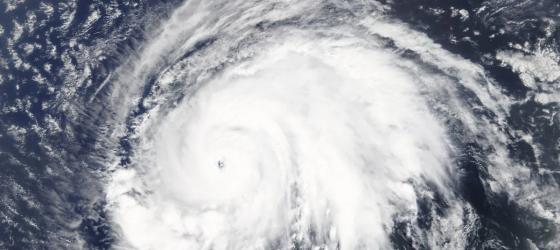Dove e quando
Genoa, Italy – June 17-21, 2024
teachers: Sabrina Guastavino(1) and Emma Perracchione(2)
affiliation: (1)DIMA | Dipartimento di Matematica of the Università di Genova, (2)DISMA | Dipartimento di Scienze Matematiche of the Politecnico di Torino
date: June 17-21, 2024
venue: Genoa (Italy), Valletta Puggia, DIMA | Dipartimento di Matematica – Università di Genova (room 715)
Data and physics driven (kernel) machine learning: Applications to solar physics and space weather
This PhD course is carried out and supported by the project Physics-based AI for predicting extreme weather and space weather events (AIxtreme) funded by La Fondazione Compagnia di San Paolo and Fondazione CDP.
The course contents and timetable are below:
Roots of machine learning belong to both optimization and approximation theory. One of the first efforts in the field of classification and regression learning is due to kernel theory. The course will then present and study kernels and associated native spaces. Techniques of standard learning, as SVM, will be presented in a novel framework by using recent tools known as variably scaled kernels. Such techniques can be applied in the context of astronomical imaging and the basics concerning the reconstruction problem of solar flares sampled by the telescope STIX, on board Solar Orbiter, will be provided. Penalized-methods, known as regularization methods in the inverse problem framework, were presented for regression and classification problems. Such methods will be introduced in a more general framework which include areas as statistical learning, inverse problems and approximation theory with the use of connection between feature maps and reproducing kernels. In particular, l1-type penalized methods were analyzed in terms of properties in selecting the most relevant features involved in the classification and/or prediction tasks. Moreover, some algorithms that are typically associated with approximation theory, such as the greedy schemes, will be reformulated and studied in the era of artificial intelligence and applied as feature ranking tools in the framework of geo-effective events, i.e, Solar events that can cause problems to our infrastructures. The final part of the course will be more computationally oriented and will mainly focus on machine learning techniques as neural networks in the context of space weather applications as prediction of solar flares, coronal mass ejection’s travel times from the Sun to Earth and geoeffective events.
- Monday 17/06/24
- h. 9.30 am – 12.30 am (3hEP): Introduction to scattered data interpolation problems via meshfree methods. Examples of kernels and concepts as Haar spaces, well-posedness.
- h. 2.00 pm – 4.00 pm (2hEP): Error and stability bounds in the native spaces for kernel interpolants. Greedy methods for interpolation: selection of a suitable number of examples.
- Tuesday 18/06/24
- h. 9.30 am – 12.30 am (3hSG): Theoretical framework for statistical learning, inverse problems and approximation theory: regularized and penalized methods.
- h. 2.00 pm – 4.00 pm (2hEP) Variably Scaled Kernels with a special focus on Fourier inverse problems: error bounds in the image and frequency domains.
- Wednesday 19/06/24
- h. 9:30 am – 12:30 am (3hEP) Application to solar flare reconstructions using data from STIX. Kernels and VSKs for machine learning, e.g. concepts of expressiveness, spectral ratio.
- h. 2.00 pm– 4.00 (2hEP) (Greedy) methods for constructing efficient classifiers. Classifier-dependent feature reduction via greedy schemes.
- Thursday 20/06/24
- h. 9.30 am – 12.30 am (3hSG) Deep and machine learning for forecasting problems (classification and regression): key aspects
- h. 2.00 pm – 5.00 pm (3hSG) Data-driven and physics-driven machine learning for space weather forecasting problems
- Friday 21/06/24
- h. 9.30 am – 12.30 am (2hEP+1SG) Overview of the most recent results in space weather forecasting with machine and deep learning and future directions
Credits
featured photo: "Hurricane Lorenzo moving through the eastern North Atlantic Ocean, as seen from NASA's Terra satellite" © NASA Worldview, Earth Observing System Data and Information System (EOSDIS).
